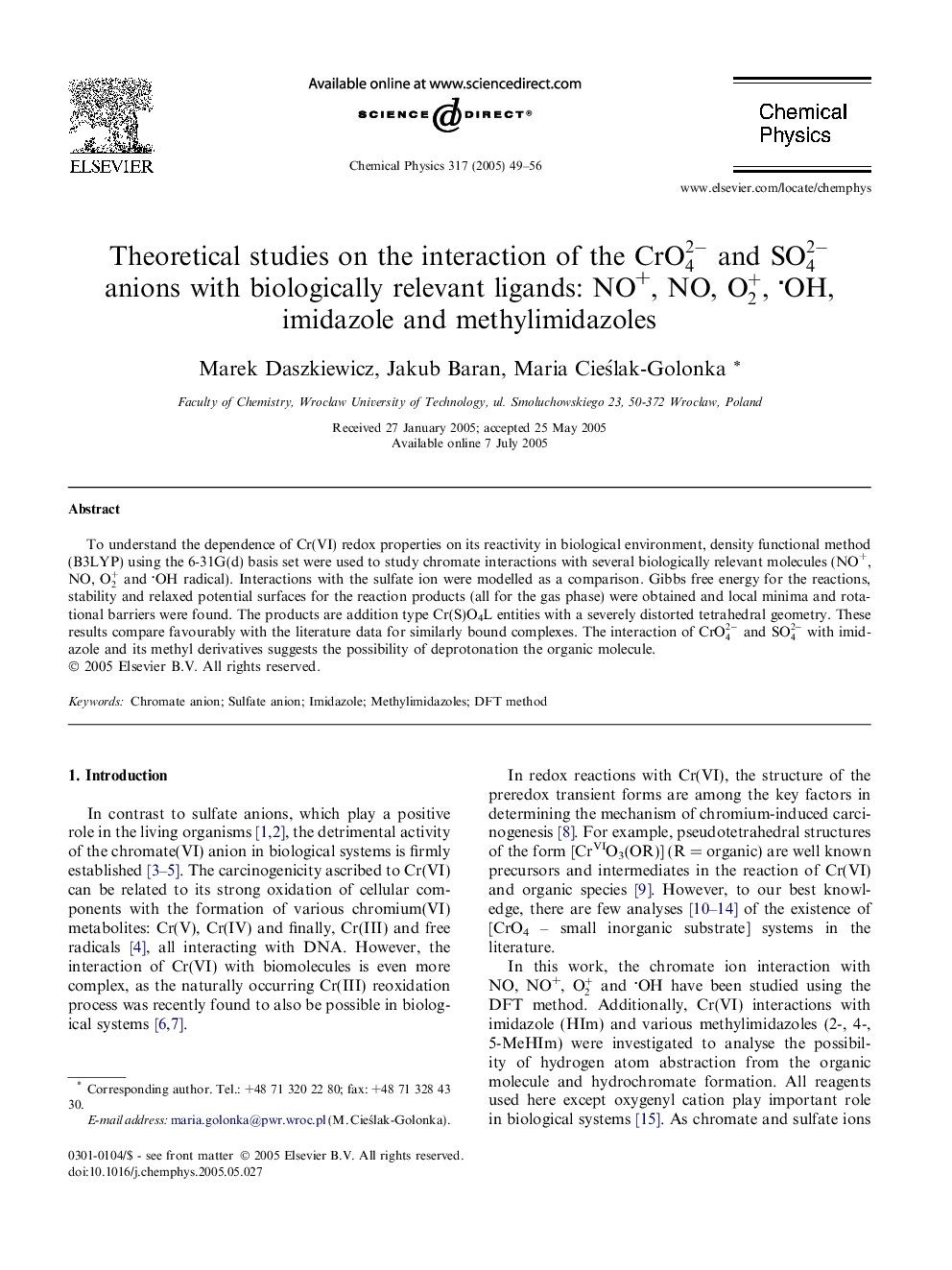| Article ID | Journal | Published Year | Pages | File Type |
|---|---|---|---|---|
| 9575214 | Chemical Physics | 2005 | 8 Pages |
Abstract
To understand the dependence of Cr(VI) redox properties on its reactivity in biological environment, density functional method (B3LYP) using the 6-31G(d) basis set were used to study chromate interactions with several biologically relevant molecules (NO+, NO, O2+ and OH radical). Interactions with the sulfate ion were modelled as a comparison. Gibbs free energy for the reactions, stability and relaxed potential surfaces for the reaction products (all for the gas phase) were obtained and local minima and rotational barriers were found. The products are addition type Cr(S)O4L entities with a severely distorted tetrahedral geometry. These results compare favourably with the literature data for similarly bound complexes. The interaction of CrO42-andSO42- with imidazole and its methyl derivatives suggests the possibility of deprotonation the organic molecule.
Related Topics
Physical Sciences and Engineering
Chemistry
Physical and Theoretical Chemistry
Authors
Marek Daszkiewicz, Jakub Baran, Maria CieÅlak-Golonka,
